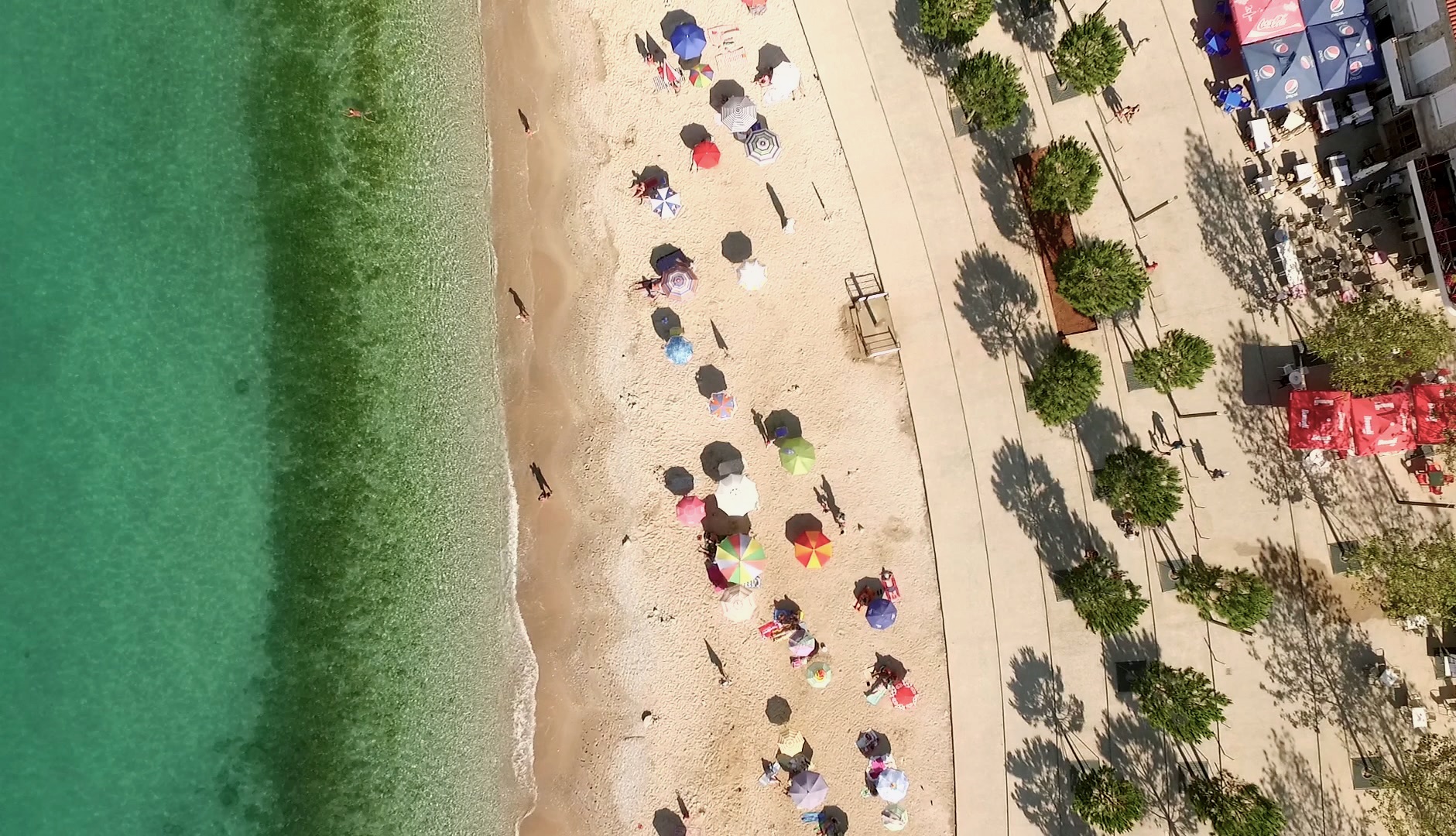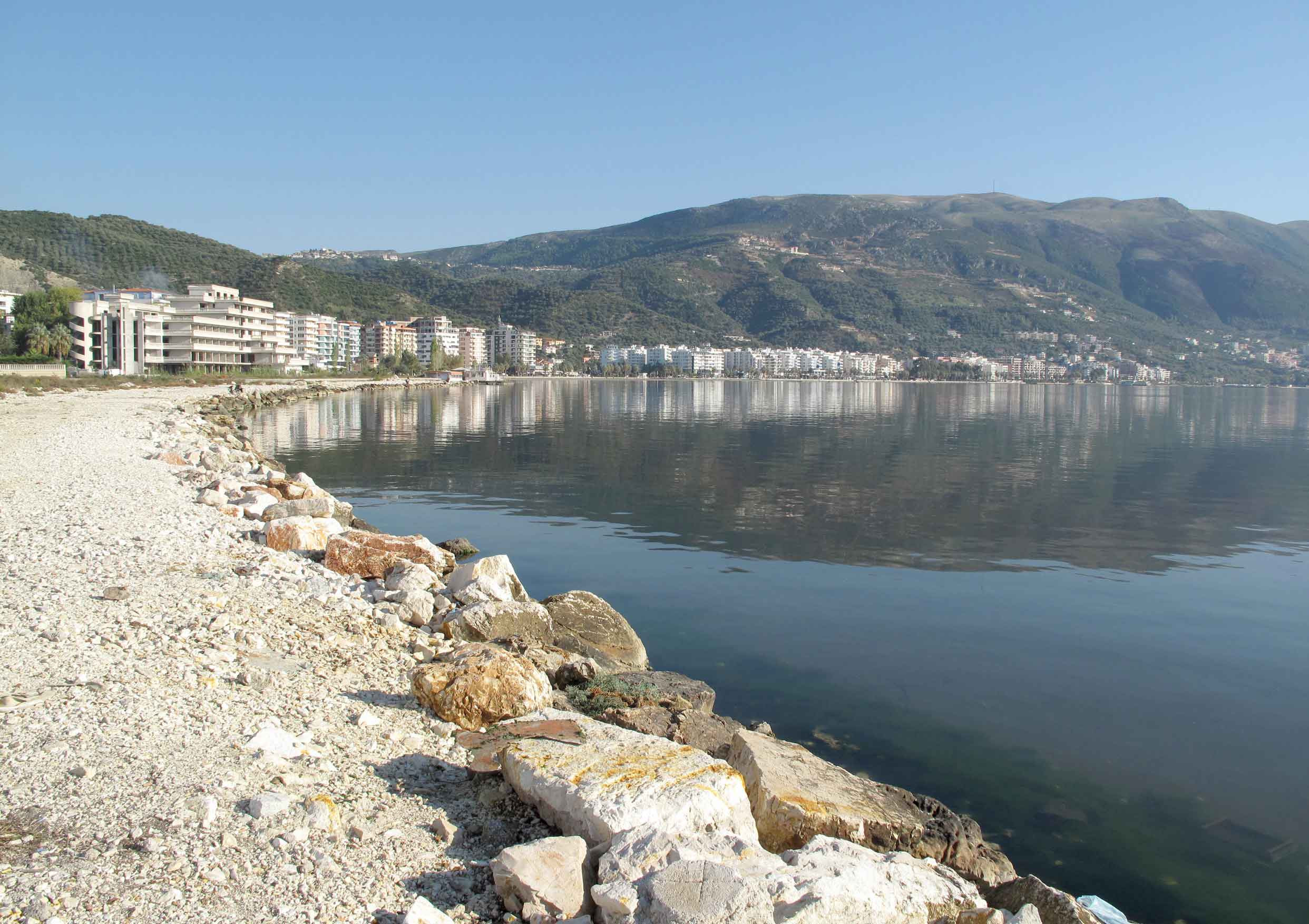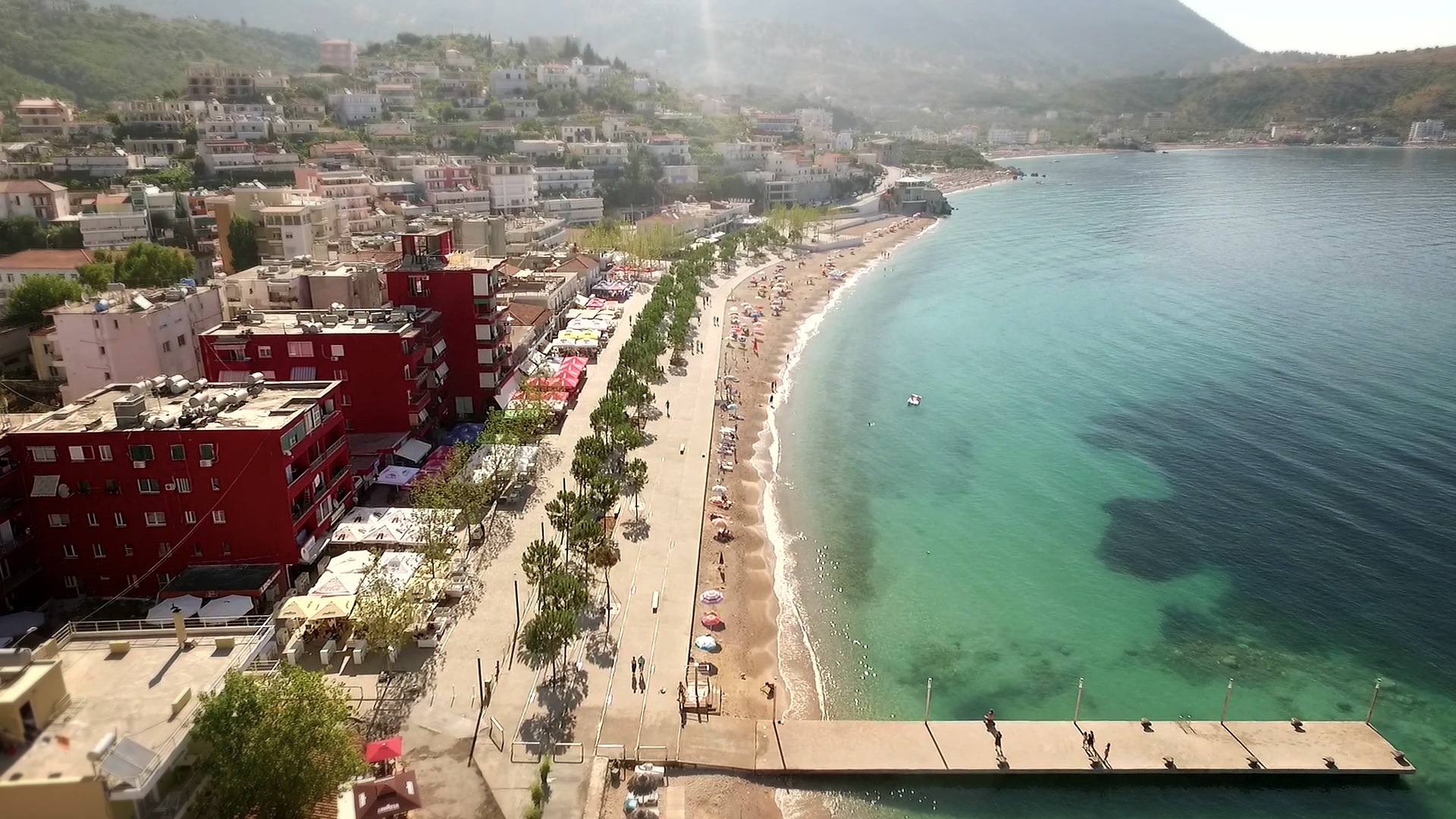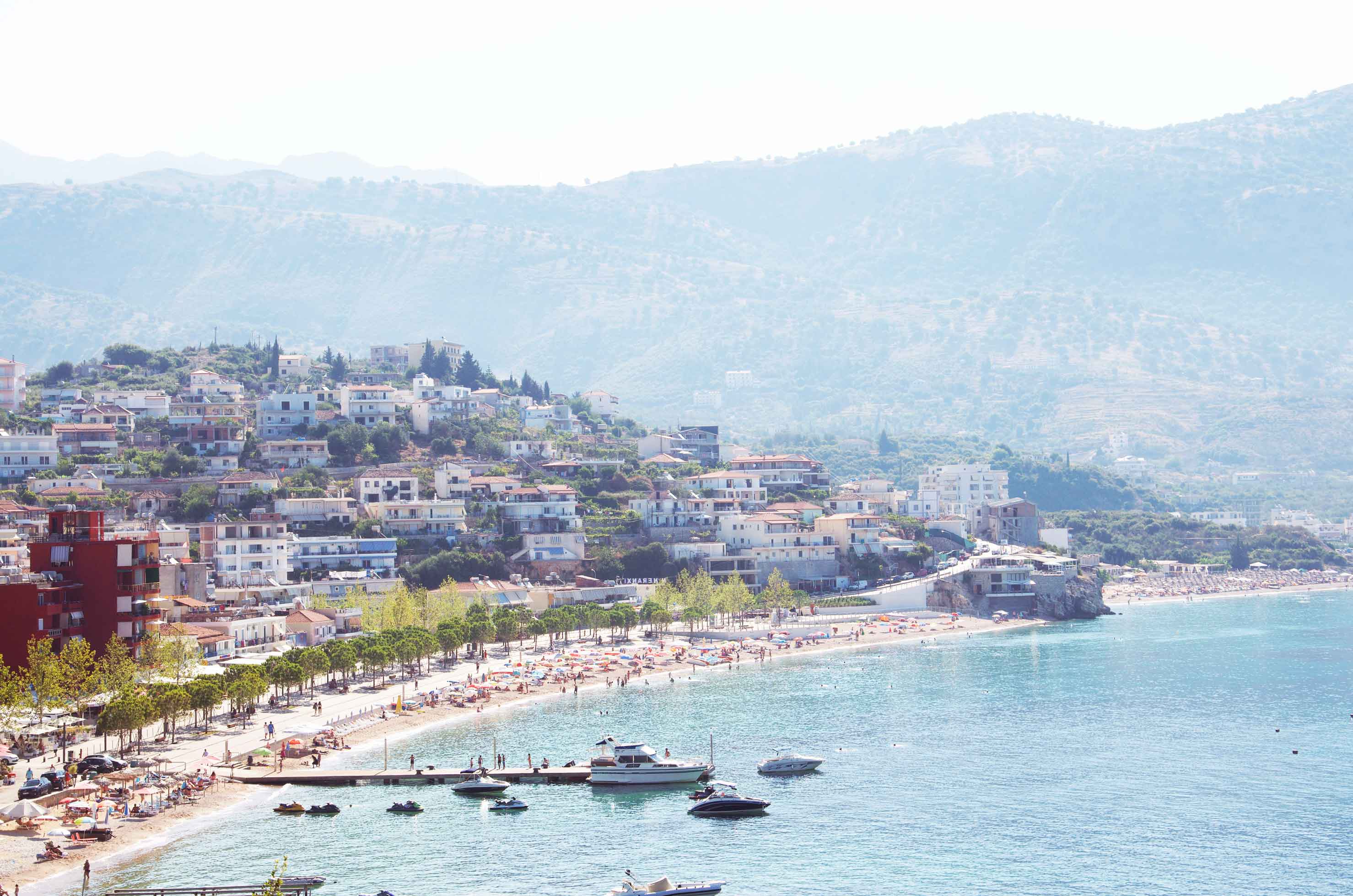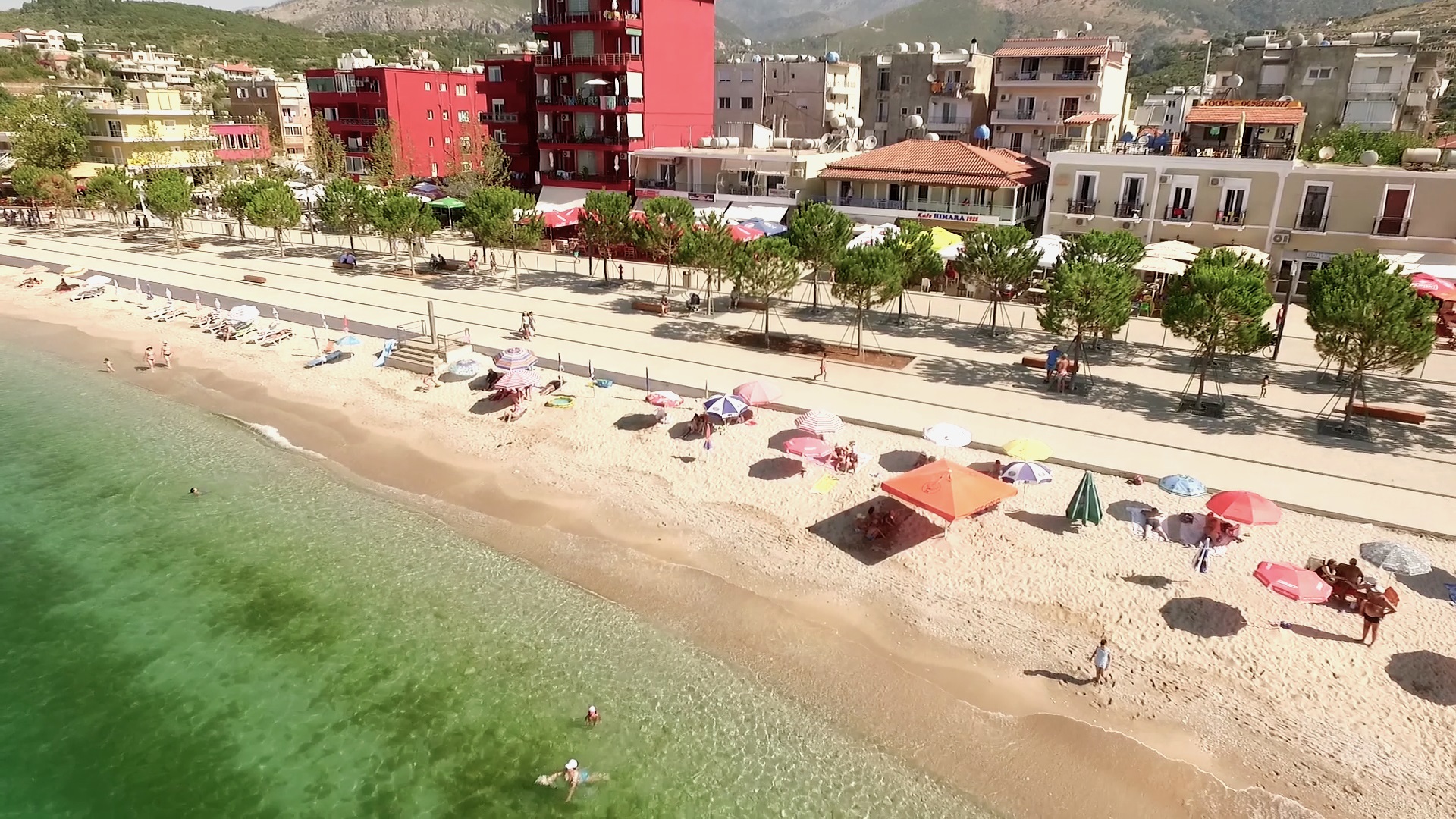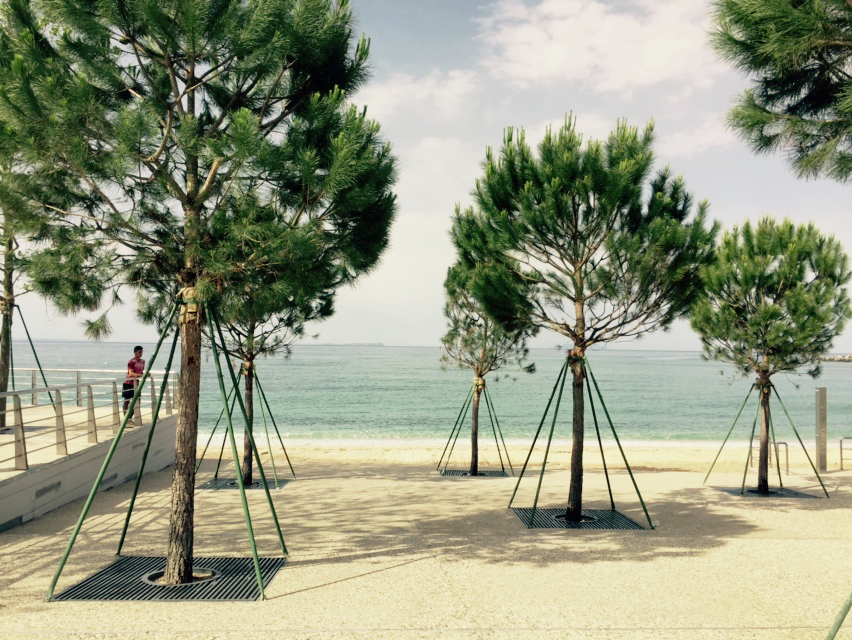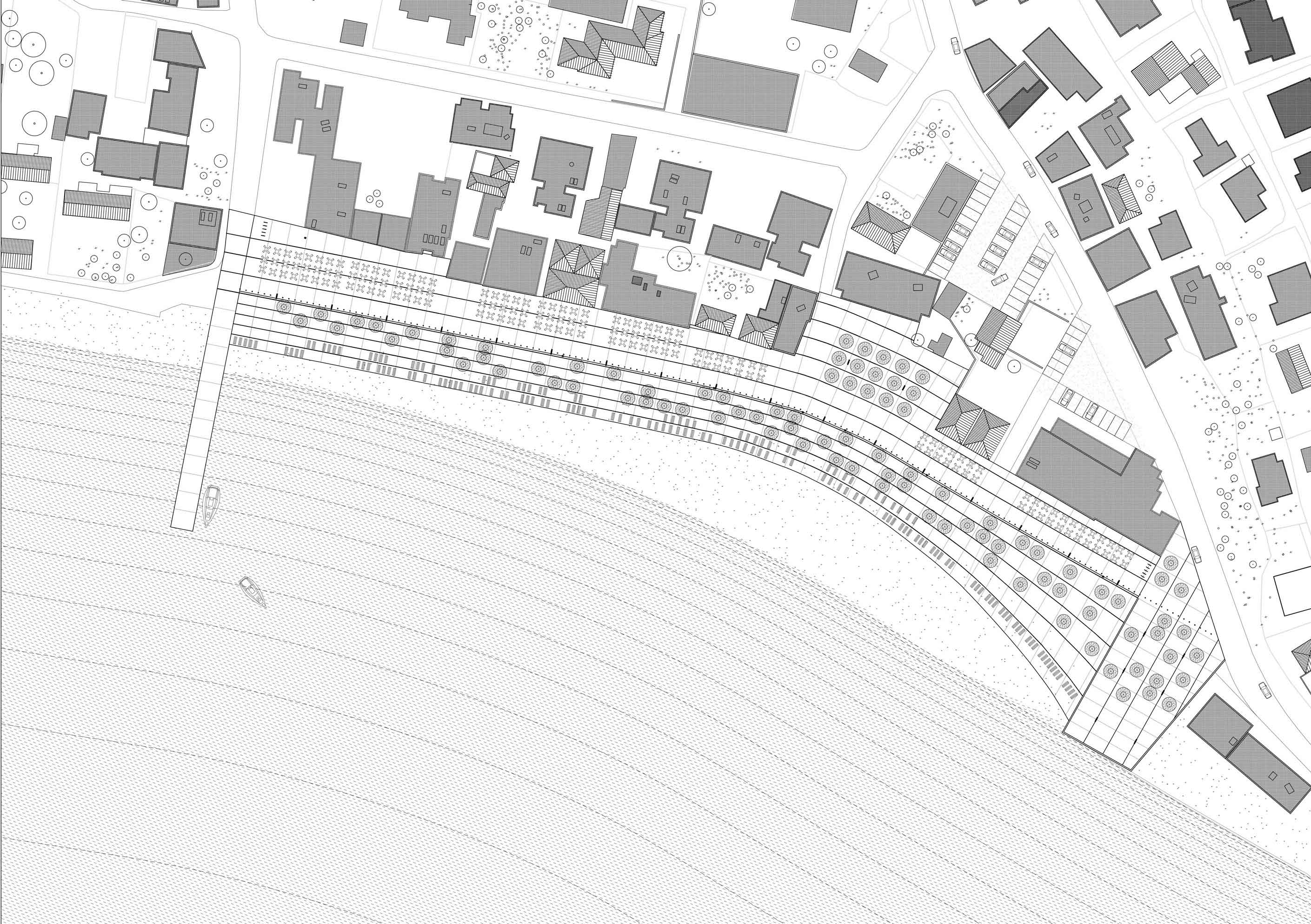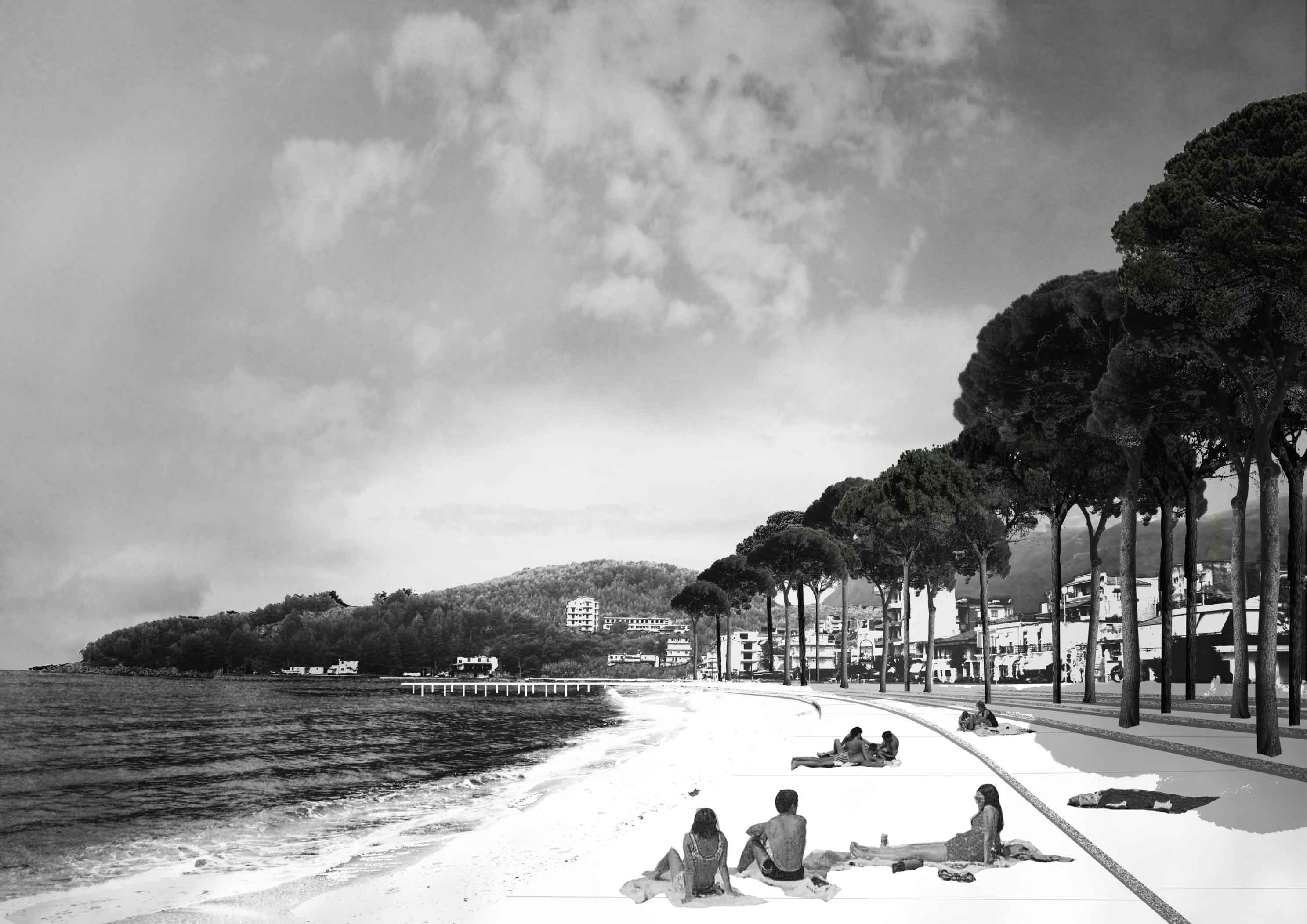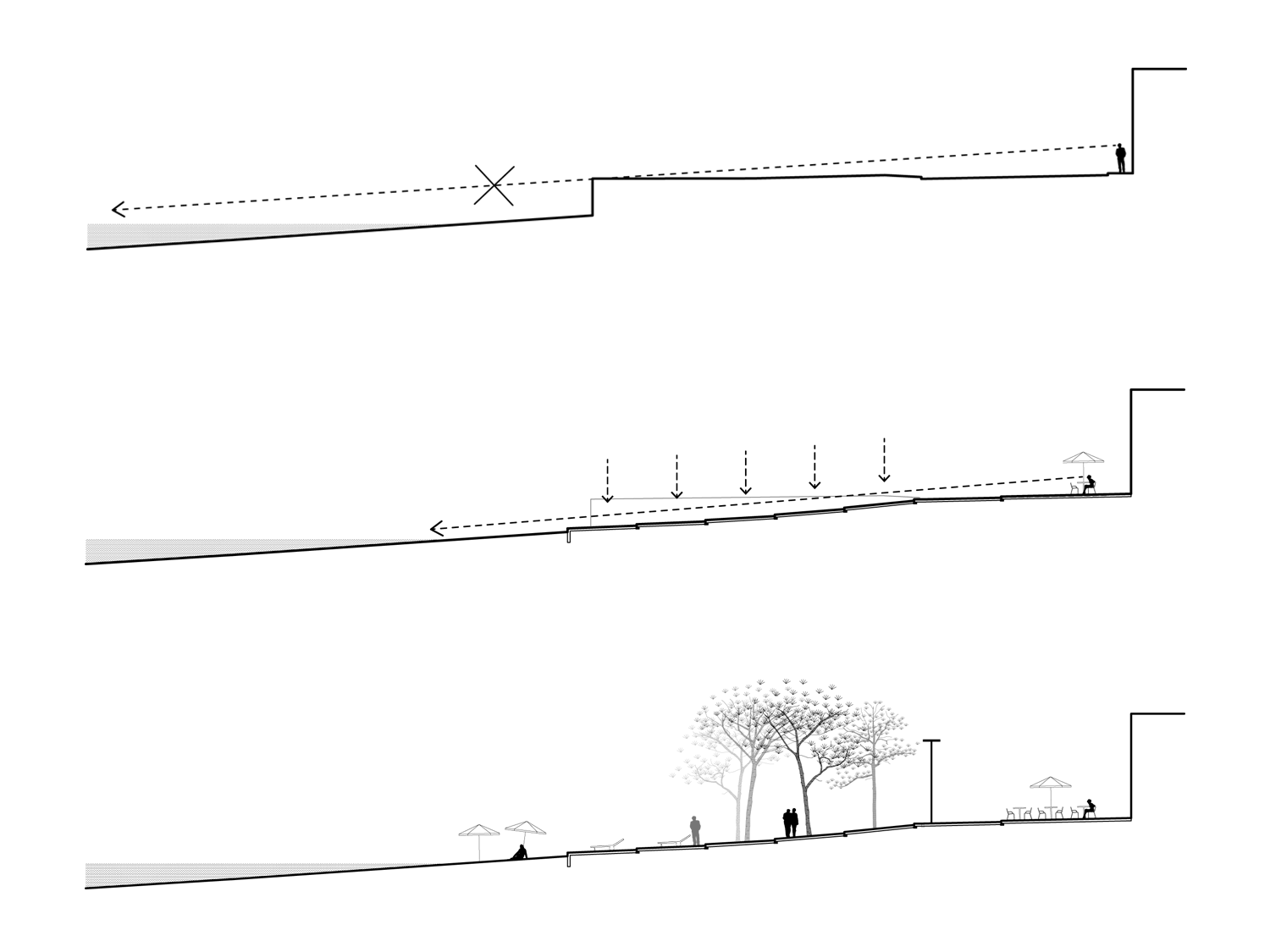Previous state
Himara, a quiet town on the south coast of Albania and part of Vlorë County, has a mainly Greek population with origins going back to antiquity. Its chief attraction is the beauty of its coastline, spreading out in the form of a bay and opening into the Ionian Sea, with beaches of white sand and surrounded by hills terraced with olive and lemon trees. This is a typically Mediterranean landscape with a very clear tourist potential, which was recognised by the government of Albania in its plan to rehabilitate the country’s Ionian coast by means of an investment programme.
The seafront in Himara consisted of a main road that totally cut off the town from the sea. A retaining wall rising two metres from the level of the beach protected the road from possible flooding but also blocked sea views and obviously obstructed access to the water.
Aim of the intervention
The recovery of the Himara seafront is part of a set of actions programmed by the Albanian government with the aim of redeveloping the coast as an attractive tourist destination and part of a model based on sustainable development. Hence, entries were called for in an international contest organised by the Albanian Development Fund (ADF) and its agency for urban and territorial development, Atelier Albania, which is responsible for planning possible projects where international architects and local offices can work together. The competition, won by Bureau Bas Smets and SON-group offered the opportunity for a radical reconsideration of the relationship between the town and the sea in order to return to the original situation before the zone was affected by the advent of vehicular traffic.
Before commencing the design process, a visit to the place was organised with a view to making direct contact with the town council and to discover what suggestions and ideas were being expressed by local residents. The authors of the project believed that considering the different views of the townspeople of Himara was essential, not only in order to understand the context and needs of residents but also, and especially, to think about how to combine these needs with tourist activities.
Description
The main challenge of the project was how to resolve the two factors that had brought about the isolation of the town from the sea. The first was demolishing the retaining wall which, with its height above sea level, protected the road from possible flooding. The road has been moved away from the coast and, with the help of maritime engineering, has been replaced with a series of platforms gently sloping in terraces and responding in the most adequate way to the impact of the waves. Their form, then, re-creates the pulsing movements of the water, taking the form of a beautiful curve. Using local sand and gravel from nearby quarries, the platforms have been constructed with washed or exposed aggregate concrete, thus giving the impression that the beach has solidified, and that it has been extended to the facades of the buildings along the shoreline. A large number of pines, planted along the length of the new seaside promenade, offer shade and provide a natural screen for the different activities happening along the coastal space. From the beach, the pines appear as a continuous green horizon and they also soften the predominant presence of the heterogeneous architecture of the seafront. A new jetty is used for mooring boats and also offers different views of the town from the water.
The second factor the project had to deal with was the invasion of the waterfront by cars. The old car parks have been removed and only a narrow service lane giving access to hotels and restaurants remains. Traffic is now restricted to loading and unloading and emergency situations.
Assessment
Cars have now been removed from the three hundred metres of the new waterfront in order to re-establish a direct connection between the town and the sea. The beach and the waterfront come together in a single public space, shaped with concrete made from local materials with the addition of native trees which now endow the space of the project with a strong identity. All of these elements represent low construction and maintenance costs.
The project is visible from the sea and, on the completely accessible beach, the behaviour of tourists and local residents has radically changed, taking the form of intensive use of the coast thanks to activities programmed on the platforms and the appearance of new hotels and restaurants. There can be no doubt that a welcoming seafront has been created and that this has transformed Himara into a true seaside town.
Teresa Navas
[Last update: 10/12/2020]


